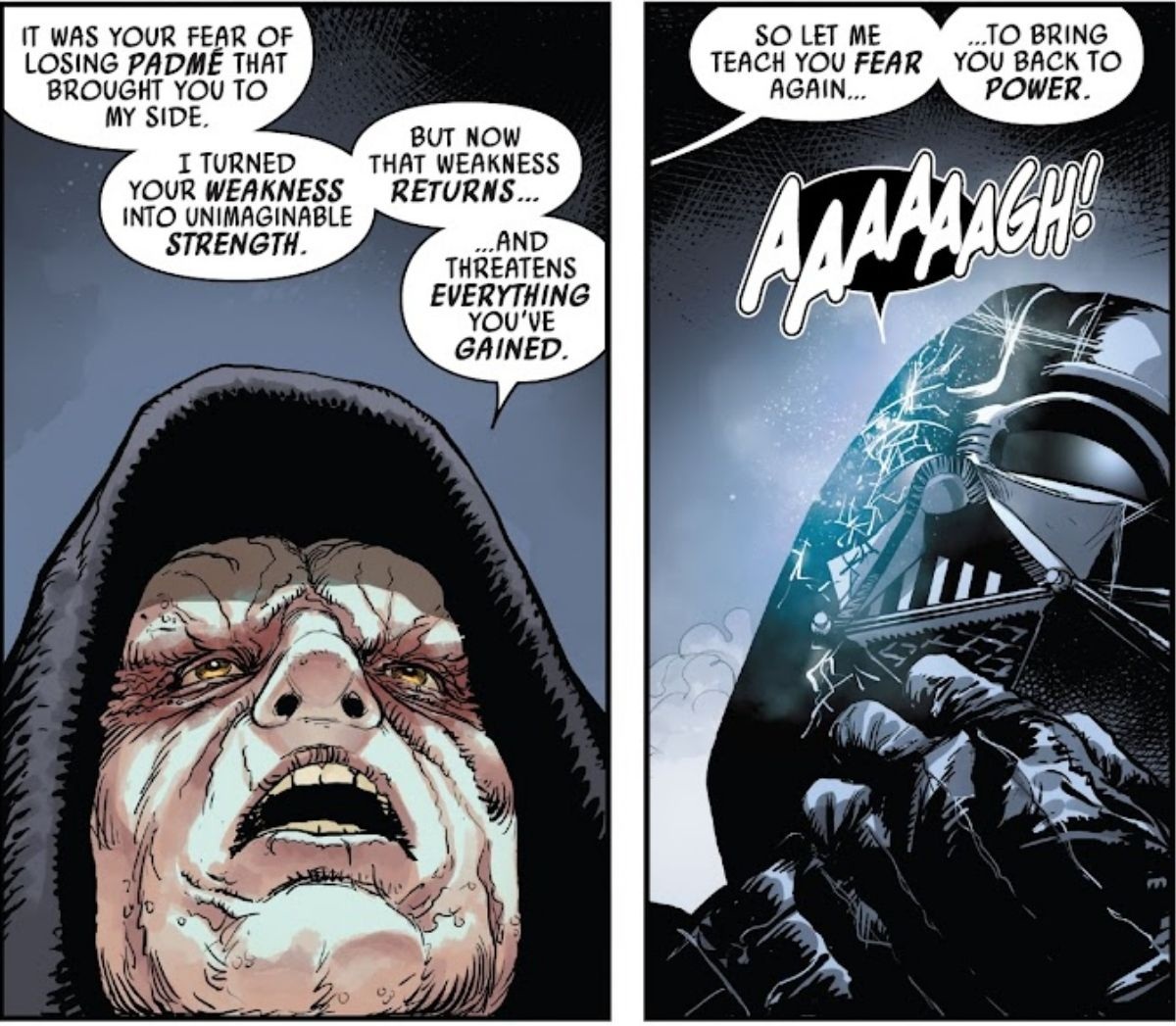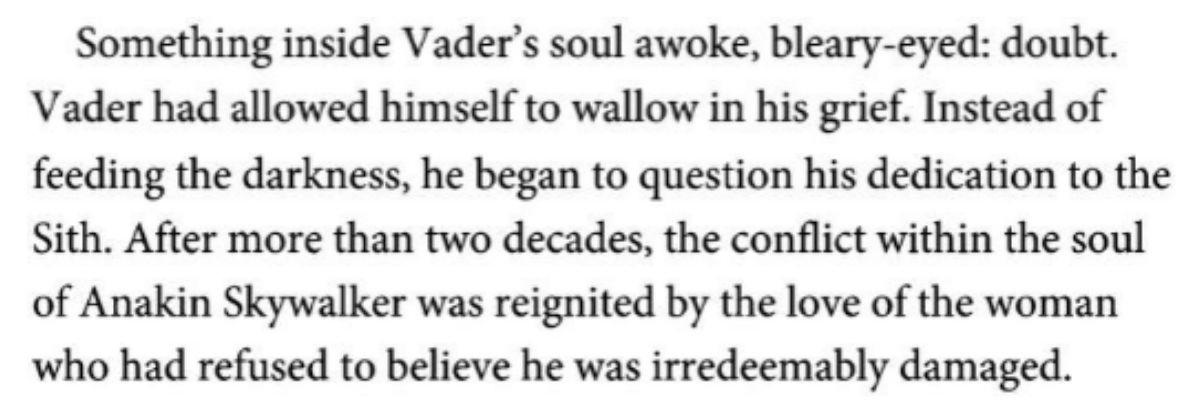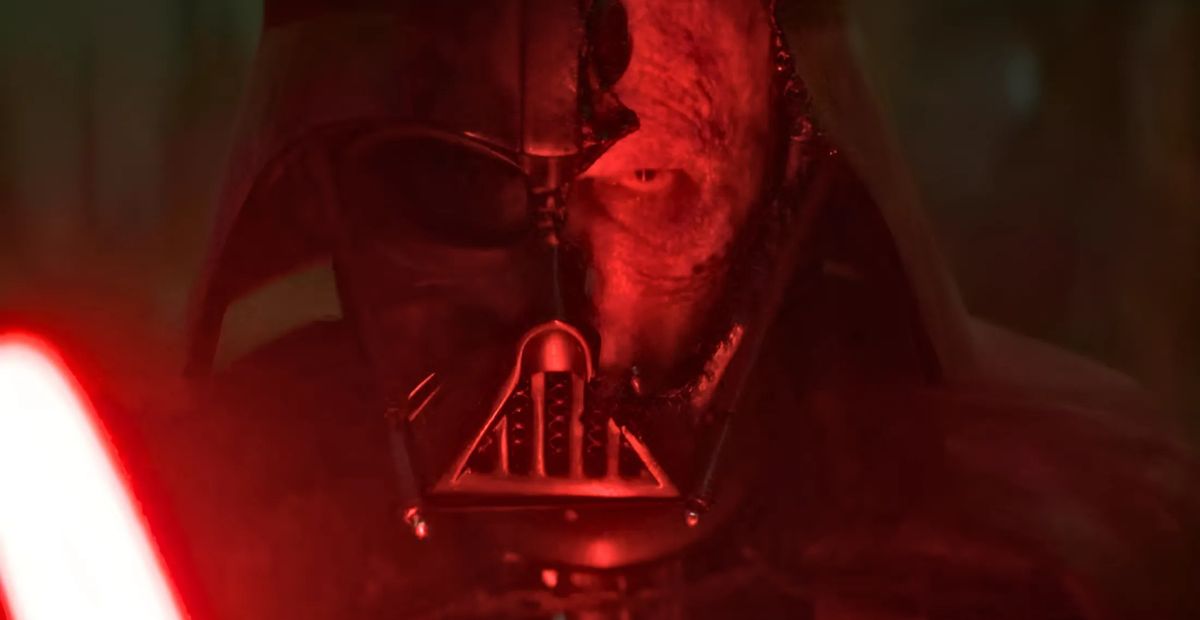Last Friday, me and my friends did a Star Wars Original Trilogy marathon. By the end of Return of the Jedi, one of them casually said, “You know, Vader’s biggest weakness is facing people who still see him as Anakin. Or anytime Vader was faced with Anakin’s past, he wasn’t completely there.”
At first, I thought he was just throwing out a random take—but the more I thought about it, the more it made sense. Every time Vader is up against someone from his past—whether it’s Obi-Wan or Ahsoka—he doesn’t walk away as the cold, unstoppable force we usually see.
Vader’s First Time Showing Weakness in Front of Palpatine
To start, we have to point out the pattern: every time Vader faces someone tied to his past—like Ahsoka or Obi-Wan—he can’t seem to win. Not only does he fail to defeat them, but he often ends up on the losing side in a big way.
Take Ahsoka on Malachor, for example. In Star Wars Rebels, she holds her own against him and even cracks his mask open in a moment that’s both powerful and personal. The same happens in the Obi-Wan Kenobi series. Their rematch shows that even at full strength, Vader struggles against Obi-Wan.
And those are just the moments we’ve seen on screen. But it turns out Palpatine noticed this pattern too.
We see the first clear moment of that in Darth Vader (2020) issues #5 and #6, when Vader uncovers Padmé’s final words before her death: “There is still good in him.” Hearing that shatters something inside him. It doesn’t break him physically—but emotionally, it shakes him.
Vader’s strength in the dark side comes from his hatred. That rage is what fuels his power as a Sith. But when he learns what Padmé truly believed, that maybe he wasn’t completely lost, the fire of that hatred starts to fade. And with it, his power weakens.
When Vader returns to Coruscant, Palpatine senses something’s wrong. He realizes Vader’s hatred is slipping—and without it, he’s no longer the fearsome apprentice the Sith need. To Palpatine, this wasn’t just a moment of doubt—it was a betrayal. Vader’s hesitation, his fading anger, all of it signaled that he was slipping away from the dark side.
Palpatine himself admitted that Vader’s greatest weakness was the people from his past. One comic panel captures this perfectly, so I’ll just let it speak for itself below.

In Skywalker: A Family at War, the book just proves this point even stronger. In the book, we follow Vader to the place of Padmé’s burial. There, in the tomb of the woman he once loved, we see the Sith Lord brought to his emotional knees.
He uses the Force to crack open her sarcophagus, but the act isn’t one of strength—it’s driven by desperation. As the stone splits, the reality of what he’s done finally confronts him:
“How many nights had he woken next to his bride and seen that face, so calm and serene? So vulnerable yet trusting. Vader reached through the Force to break open the stone sarcophagus, but visions of Padmé in life and in his final embrace—choked by his hand—flashed unbidden through his mind. The pain that had fueled him for decades turned into a whimper, replaced by a torrent of grief. He tried. He failed.”
He can’t even look at her remains. The pain is too sharp, too personal. The dark side demands rage and control—but here, all Vader has left is regret. And in that moment, something begins to crack.
“Something inside Vader’s soul awoke, bleary-eyed: doubt. Vader had allowed himself to wallow in his grief. Instead of feeding the darkness, he began to question his dedication to the Sith. After more than two decades, the conflict within the soul of Anakin Skywalker was reignited by the love of the woman who had refused to believe he was irredeemably damaged.”

This is more than grief—it’s the reawakening of a part of Anakin he thought was long dead. Padmé’s final message, her belief in his goodness, doesn’t just hurt—it lingers. It haunts. And it begins to corrode the foundation Palpatine built his apprentice on.
From this point on, Vader’s loyalty to the Sith is no longer absolute. The wound Padmé left behind becomes a quiet rebellion in his soul—and we see the first flicker of the man he used to be.
When Facing Obi-Wan and Ahsoka, Vader’s Armor Always Cracks
If Padmé’s memory could shake him without even being there, imagine what happens when Vader is face-to-face with people who actually knew Anakin Skywalker.
Take Ahsoka Tano on Malachor in Star Wars Rebels. She isn’t just another Jedi — she was his Padawan, someone who fought beside him for years. During their duel, she doesn’t fight him like an enemy to be destroyed, but like a friend trying to reach the person underneath the mask. And in the heat of combat, she does the unthinkable — she cracks Vader’s helmet open. For a brief moment, Anakin’s voice slips through, and he calls her by name. That hesitation is all it takes for their fight to end without either side claiming a decisive victory. It’s not that Ahsoka was stronger than him in raw power — it’s that she forced him to be Anakin for just long enough to break his momentum.
The same thing plays out with Obi-Wan Kenobi in their rematch during the Obi-Wan Kenobi series. At the height of the fight, Obi-Wan damages Vader’s helmet on the opposite side from where Ahsoka struck, revealing the scarred face of his former apprentice. And once again, Vader is caught between two identities. Obi-Wan apologizes for everything that happened, and instead of striking him down, Vader says, “I am not your failure, Obi-Wan. You didn’t kill Anakin Skywalker. I did.” It’s a moment of self-awareness — and self-deception — that shows he’s still wrestling with the truth of who he is.
In both cases, Vader isn’t the unstoppable force we see in hallway scenes or against nameless rebels. When he’s fighting strangers, he’s pure rage and precision. But against Ahsoka and Obi-Wan, there’s hesitation. There’s emotion. And in a Sith, that’s as dangerous as any wound.

